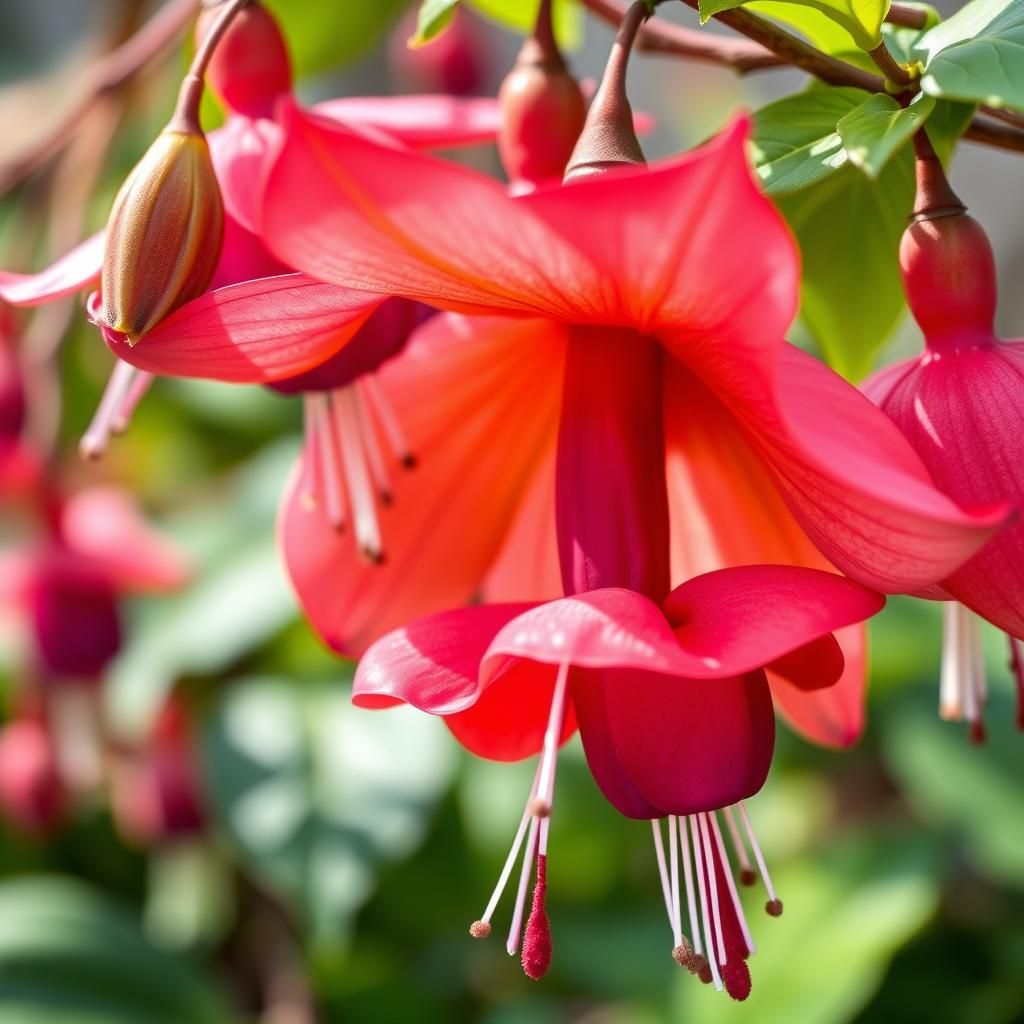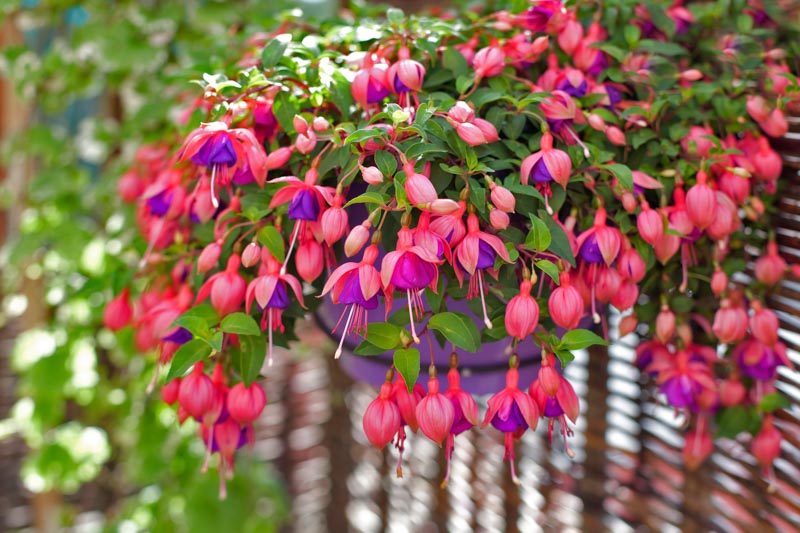Do Fuchsias Like Sun or Shade? Discover the Best Growing Conditions for Your Fuchsia Plants

Fuchsias are vibrant and uniquely beautiful flowering plants that can add a touch of elegance to any garden or outdoor space. However, one of the most common questions among gardeners is whether these stunning plants prefer sun or shade. Understanding the ideal growing conditions for fuchsias is crucial for their health and blooming potential. In this article, we will explore the sunlight requirements of fuchsias, the best environmental factors for their growth, and practical tips to ensure your fuchsia plants thrive. Discover how to create the perfect setting for these enchanting flowers to flourish in your garden.
Do Fuchsias Prefer Sunlight or Shade?
Fuchsias are typically known for their preference for shade or partial shade conditions. These vibrant flowering plants thrive best when they receive morning sun with some protection from the afternoon heat. In full sun, fuchsias can become stressed, leading to wilting or sunburn on their delicate leaves. Therefore, for optimal growth and blooming, it's recommended to plant fuchsias in areas where they can enjoy a balance of filtered sunlight and cooler temperatures.
Optimal Light Conditions
Fuchsias flourish in locations that offer filtered light or dappled shade, which means that they can enjoy a few hours of sunlight during the day, particularly in the morning. Direct exposure to harsh afternoon sun can be damaging, causing the leaves to scorch and inhibiting their blooming potential. This balance helps maintain the plant's vigor and encourages lush foliage and abundant flowering.
Effects of Too Much Sun
When fuchsias are placed in direct sunlight for extended periods, several negative effects can occur. Sunburned leaves may develop brown edges or a crispy texture, significantly impacting the aesthetics and overall health of the plant. Additionally, prolonged sun exposure can lead to excessive evaporation of moisture from the soil, making it difficult for the plant to retain necessary hydration levels, eventually leading to wilting.
Benefits of Shade
Providing shade or partial shade for fuchsias allows them to conserve moisture and maintain optimal temperature levels. This condition encourages healthier growth patterns, resulting in robust plants with lush green foliage. Moreover, shade helps prolong the blooming season, allowing fuchsias to showcase their beautiful flowers for a more extended period. Thus, the right shade conditions can enhance their overall appeal and longevity.
Soil and Watering Considerations
Fuchsias thrive in well-draining, moist soil that is enriched with organic matter. When planted in shaded areas, they may require less frequent watering, as shaded soil tends to retain moisture longer. However, it's crucial to monitor the soil consistently, as fuchsias still require regular watering, especially in hotter climates. Overwatering in shaded areas can lead to root rot, so balance is key.
Growing Fuchsias in Containers
For those who choose to grow fuchsias in containers, it’s essential to select a location that provides shade or partial shade. Containers can heat up quickly and may dry out faster than garden soil, so ample shade helps maintain cooler soil conditions. Additionally, using a high-quality, well-draining potting mix will ensure that fuchsias receive the proper amount of moisture without becoming waterlogged, thus promoting healthy growth and flowering.
| Conditions | Optimal Environment | Effects of Excess Sunlight | Soil Requirements | Container Guidance |
|---|---|---|---|---|
| Light | Partial shade | Leaf scorch | Rich, well-draining | Shaded position |
| Water | Consistent moisture | Wilting | Moisture-retaining | Monitor closely |
| Temperature | Cooler environment | Stress on plant | Organic matter | Well-draining mix |
Where is the best place to put a fuchsia?


To ensure the best growth and flowering of a fuchsia, it is essential to select an appropriate location for planting. The ideal place to put a fuchsia is one that offers a balance of sunlight and shade, with well-drained soil that maintains moisture without becoming waterlogged. Fuchsias thrive in areas where they can receive partial sunlight, typically around 4 to 6 hours of sunlight daily, preferably in the morning while being sheltered from the harsh afternoon sun.
The following factors will help determine the best place for a fuchsia:
Light Conditions
Fuchsias flourish in specific light environments. Here are important light considerations:
- Partial Shade: Fuchsias prefer spots that receive morning sun and afternoon shade.
- Avoid Intense Heat: Too much direct sunlight can scorch the leaves and flowers.
- Indirect Light: Locations with bright indirect light can also be suitable for fuchsias.
Soil Quality
The soil quality directly impacts the thriving of fuchsia plants. Key aspects include:
- Well-drained Soil: Soil should drain well to prevent root rot.
- Moisture Retention: Ideal soil should retain some moisture.
- Rich in Organic Matter: Adding compost or organic material can improve soil quality.
Climate Considerations
Understanding your local climate is crucial for growing vibrant fuchsias. Key points include:
- Cool Temperatures: Fuchsias thrive in mild climates, ideally under 75°F (24°C).
- Humidity Levels: Higher humidity is generally beneficial for fuchsia plants.
- Frost Protection: In colder areas, protect fuchsias from frost by planting them in sheltered spots.
Container vs. Ground Planting
Deciding between potting or ground planting can significantly affect growth. Consider these factors:
- Mobility: Container plants are easier to move to suitable light or protection from weather extremes.
- Soil Control: Containers allow better control over soil type and drainage.
- Root Space: Ground planting offers more space for roots to expand.
Companion Plants
Choosing the right companion plants can enhance the growth environment for fuchsias. Consider these aspects:
- Complementary Lighting: Pair with plants that thrive in similar light conditions.
- Pest Control: Some companion plants can naturally deter pests.
- Aesthetic Arrangement: Planting fuchsias with visually appealing companions can enhance overall garden design.
Are fuchsias better in pots or ground?


Fuchsias can thrive both in pots and in the ground, depending on various factors, including your gardening goals, climate, and available space. Each method has its distinct advantages and disadvantages that can influence your gardening experience.
Benefits of Growing Fuchsias in Pots
Growing fuchsias in pots offers several advantages that are particularly beneficial for gardeners who may have limited space or seek flexibility. Here are some noteworthy points:
- Mobility: Potted fuchsias can be easily moved to take advantage of optimal sunlight or shelter them from harsh weather conditions.
- Controlled Environment: When grown in pots, the soil quality and moisture levels can be controlled more easily, which is crucial for sensitive plants like fuchsias.
- Pest Management: Container gardening often limits the risk of soil-borne pests and diseases, making it easier to maintain healthy plants.
Benefits of Growing Fuchsias in the Ground
Planting fuchsias directly in the ground has its own set of benefits that can promote vigorous growth and flowering. Here are the key aspects:
- Stronger Root Systems: Fuchsias planted in the ground can develop deeper root systems, which generally provides better stability and access to nutrients.
- More Natural Growth Conditions: Ground planting allows fuchsias to experience natural soil drainage and seasonal moisture variation, which they may prefer.
- Lower Maintenance: Ground-planted fuchsias may require less frequent watering and fertilizing than those in pots, as they can draw from the surrounding soil.
Climate Considerations for Fuchsias
The climate in which you live can significantly influence whether fuchsias perform better in pots or in the ground. Factors include:
- Temperature Extremes: In regions with extreme temperatures, containers may provide better temperature moderation compared to in-ground planting.
- Frost Resistance: Potted fuchsias can be moved indoors during frost, which can provide a significant advantage in colder climates.
- Sunlight Exposure: Potted plants can be repositioned based on seasonal sunlight changes, keeping them healthy and vibrant.
Soil Requirements for Fuchsias
The type of soil you use can greatly affect the health of fuchsias, with different requirements for pots and ground planting. Important factors include:
- Drainage: Fuchsias prefer well-draining soil to avoid root rot, which can be more easily managed in pots.
- Nutrient Availability: Container soil can be enriched easily; however, in-ground plants may have access to a more diverse nutrient base.
- pH Levels: Fuchsias thrive in slightly acidic to neutral soil, which can be tested and adjusted more conveniently in pots.
Maintenance and Care for Fuchsias
Caring for fuchsias differs between pots and ground planting, impacting their health and growth potential. Consider the following:
- Watering Needs: Potted fuchsias may need more frequent watering due to quicker soil drying; ground-planted varieties may rely more on rain.
- Pruning: Regardless of planting method, regular pruning can encourage blooming, but approaches may vary based on their environment.
- Fertilization: Potted fuchsias often require more frequent fertilization as nutrients get depleted quicker in confined soil.
Questions from Our Readers
Do fuchsias prefer sun or shade?
Fuchsias typically prefer partial shade over full sun exposure. While they can tolerate some sunlight, too much can lead to leaf scorching and reduced blooming. Ideally, they thrive in a location that receives morning sun and afternoon shade.
What happens if fuchsias get too much sun?
When fuchsias receive excessive sunlight, they may suffer from stress, resulting in wilting or crispy leaves. This can greatly affect their ability to produce flowers, leading to fewer blooms and overall decline in plant health.
See also:
Can fuchsias grow in full shade?
Yes, fuchsias can grow in full shade, but this may affect their growth and flowering. In shaded areas, they may become leggy as they stretch towards any available light, leading to fewer flowers compared to plants grown in partial shade.
How much sunlight do fuchsias need for optimal growth?
For optimal growth, fuchsias generally need about 4 to 6 hours of sunlight per day, ideally in the morning. This allows them to enjoy some sunlight while minimizing the risk of overheating during the hotter parts of the day.

If you want to read more articles like Do Fuchsias Like Sun or Shade? Discover the Best Growing Conditions for Your Fuchsia Plants, we recommend you check out our Plants category.
Leave a Reply
Related Articles